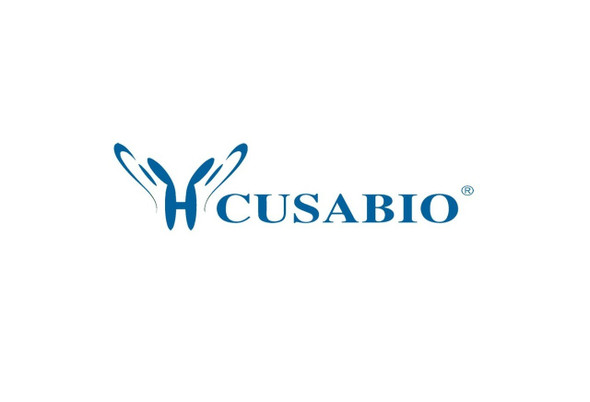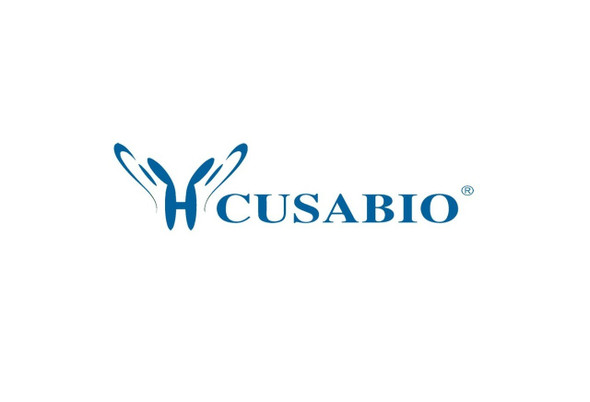Cusabio Polyclonal Antibodies
PARP1 Antibody | CSB-PA017457LA01HU
- SKU:
- CSB-PA017457LA01HU
- Availability:
- 3 to 7 Working Days
Description
PARP1 Antibody | CSB-PA017457LA01HU | Cusabio
PARP1 Antibody is Available at Gentaur Genprice with the fastest delivery.
Online Order Payment is possible or send quotation to info@gentaur.com.
Product Type: Polyclonal Antibody
Target Names: PARP1
Aliases: Poly [ADP-ribose] polymerase 1 (PARP-1) (EC 2.4.2.30) (ADP-ribosyltransferase diphtheria toxin-like 1) (ARTD1) (NAD (+) ADP-ribosyltransferase 1) (ADPRT 1) (Poly[ADP-ribose] synthase 1), PARP1, ADPRT PPOL
Background: Involved in the base excision repair (BER) pathway, by catalyzing the poly (ADP-ribosyl) ation of a limited number of acceptor proteins involved in chromatin architecture and in DNA metabolism. This modification follows DNA damages and appears as an obligatory step in a detection/signaling pathway leading to the reparation of DNA strand breaks (PubMed:17177976, PubMed:18172500, PubMed:19344625, PubMed:19661379, PubMed:23230272) . Mediates the poly (ADP-ribosyl) ation of APLF and CHFR (PubMed:17396150) . Positively regulates the transcription of MTUS1 and negatively regulates the transcription of MTUS2/TIP150. With EEF1A1 and TXK, forms a complex that acts as a T-helper 1 (Th1) cell-specific transcription factor and binds the promoter of IFN-gamma to directly regulate its transcription, and is thus involved importantly in Th1 cytokine production (PubMed:17177976) . Required for PARP9 and DTX3L recruitment to DNA damage sites (PubMed:23230272) . PARP1-dependent PARP9-DTX3L-mediated ubiquitination promotes the rapid and specific recruitment of 53BP1/TP53BP1, UIMC1/RAP80, and BRCA1 to DNA damage sites (PubMed:23230272) . Mediates serine ADP-ribosylation of target proteins following interaction with HPF1; HPF1 conferring serine specificity (PubMed:28190768) . Mediates the poly (ADP-ribosyl) ation of histones in a HPF1-dependent manner (PubMed:27067600) . Involved in the synthesis of ATP in the nucleus, together with NMNAT1, PARG and NUDT5 (PubMed:27257257) . Nuclear ATP generation is required for extensive chromatin remodeling events that are energy-consuming (PubMed:27257257) .
Isotype: IgG
Conjugate: Non-conjugated
Clonality: Polyclonal
Uniport ID: P09874
Host Species: Rabbit
Species Reactivity: Human
Immunogen: Recombinant Human Poly [ADP-ribose] polymerase 1 protein (324-541aa)
Immunogen Species: Homo sapiens (Human)
Applications: ELISA, WB, IHC, IF
Tested Applications: ELISA, WB, IHC, IF; Recommended dilution: WB:1:1000-1:5000, IHC:1:100-1:500, IF:1:100-1:500
Purification Method: Antigen Affinity Purified
Dilution Ratio1: WB:1:1000-1:5000
Dilution Ratio2: IHC:1:100-1:500
Dilution Ratio3: IF:1:100-1:500
Dilution Ratio4:
Dilution Ratio5:
Dilution Ratio6:
Buffer: Preservative: 0.03% Proclin 300
Constituents: 50% Glycerol, 0.01M PBS, PH 7.4
Form: Liquid
Storage: Upon receipt, store at -20°C or -80°C. Avoid repeated freeze.
Initial Research Areas: Signal Transduction
Research Areas: Signal Transduction













